Andrew Chesterton road tests and reviews the new Mini Countryman Cooper, Cooper D, Cooper S and Cooper SD All4 with specs, fuel consumption and verdict at its Australian launch in Canberra.
Mini's new Countryman is officially the least mini Mini ever made. So un-Mini, in fact, it now stretches over 4 metres in length for the first time ever. It's also taller and wider than the car it replaces, making it the biggest Mini ever produced by the brand.
But there's method to Mini's super-sizing madness, with the brand desperate to make sure its new Countryman isn't just big, but is also a big deal for the first time in its brief history.
The outgoing model makes up about 15 per cent of Mini's sales in Australia - despite playing in the most popular segment - and the brand's bosses reckon they know the problem. Internal surveys reveal more than 30 per cent of people who were considering a Countryman, but ended up buying something else, did so because it was too small and impractical to be used as a family car.
And so it's grown in every direction. Its now 20cm longer, 1.5cm taller and 3.3cm wider, and it sits on a 7.5cm longer wheelbase. And while those numbers might not sound massive, it makes a difference in the cabin, and adds an extra 100 litres of boot space.
So is a maximised Mini a good thing?
Mini Countryman 2017: Cooper SD Chilli All4
| Engine Type | Diesel Turbo 4, 2.0L |
|---|---|
| Fuel Type | Diesel |
| Fuel Efficiency | 6.1L/100km (combined) |
| Seating | 4 |
| Price From | $25,630 - $31,680 |
| Safety Rating |
|
Is there anything interesting about its design?
8 / 10
Like an old-school Mini that's been stung by something flying and horrible, the Countryman has swollen in every direction, with Mini also smoothing out some of the design quirks of the outgoing model.
A redesigned grille and bonnet give the front end a calmer, more mature look, while the higher roof line and the fact the 18-inch alloy wheels have been positioned at the furthest corners of the car make the Countryman seem bigger but more well-proportioned than the car it replaces.
There's a new-found maturity to the cabin. Nicer materials, less in-your-face dials and a genuine sense of premium.
Inside, there's a half-premium, half-techy air to the cabin. All models get well-bolstered, leather-trim seats, a meaty steering wheel and some genuinely cool touchpoints including the bright-red switch that fires up the engine. The dash is still dominated by a huge and light-ringed (part of a more extensive illumination set up that also shines ambient lighting in the footwell) circular display that houses the multimedia screen, while the air-vents have now been placed vertically.
There's a new-found maturity to the cabin. Nicer materials, less in-your-face dials and a genuine sense of premium. The cabin lighting is hit and miss though, but the little Mini dial that lights up on the sidewalk as you approach and unlock the car will surely put a smile on some owner's faces.
It feels roomier, too. And the addiction of standard sat nav and a reversing camera add some much needed technology to the cabin. But there's still no Apple CarPlay/Android Auto.
How practical is the space inside?
8 / 10
Growth is good for Countryman buyers, with more room for passengers and luggage. Shoulder room and leg room have both grown (albeit by about 5cm), and the interior never feels cramped no matter whether you're sitting in the front or the back.
Boot space has increased, too, growing from 350 litres to 450 litres with the 40:20:40 rear seat in place, and from 1,170 to 1,390 when it is folded flat.
Standard fit includes two cup holders for front seat passengers, plus room in the doors for bottles, but both the S and SD models also get a pull-down divider in the rear seat that houses another two. There's two ISOFIX attachment points, one in each window seat in the back.
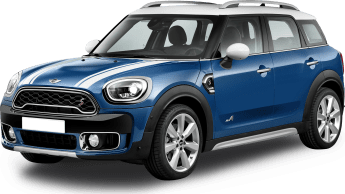
Does it represent good value for the price? What features does it come with?
7 / 10
The bad news first: there's pricing pain right across the streamlined Countryman line-up, with the like-for-like cost of entry into an automatic model climbing by $3,400, and the cheaper still manual option banished from the line up altogether.
The range now kicks off with the entry-level Cooper, now starting from $39,900, sitting below the Cooper D at $43,900. The first of the fun-flavoured variants arrives next, the $46,500 Cooper S, with the 2017 line-up topping out with the $51,500 Cooper SD (Sport Diesel) All4 - the only model to get all-wheel drive.
You do get a heap more kit for your money, though, even if some of the items really should have been included on the outgoing model, too. You get a reversing camera for the first time, for example, but you'll also find front and rear parking sensors, an auto-parking system, cruise control, 18-inch alloys and a powered boot you can open by waving your foot under the rear bumper.
The Countryman has swollen in every direction, with Mini also smoothing out some of the design quirks of the outgoing model.
Elsewhere, expect leather-trimmed seats, dual-zone climate control, keyless entry, a 6.5-inch screen (still not a touchscreen, but you can option one) paired with a six-speaker stereo and an admittedly cool light system that illuminates the Mini logo on the footpath when you unlock the car.
But the big news is the standard safety equipment that makes an appearance even on the entry-level Cooper. But more on that under our Safety heading.
Spring for the Cooper D and you'll find the same kit, but add two gears to your automatic gearbox, now an eight-speed. The Cooper S adds a sports transmission, a rear centre armrest, LED headlights and the steering wheel from the John Cooper Works models. You also get a drive-mode selector, but adjustable dampers are a cost option. The SD model gets the same as the S, only with all-wheel drive.
What are the key stats for the engine and transmission?
8 / 10
Things kick off with a less-than-exciting three-cylinder engine housed within the entry-level Cooper. The 1.5-litre power plant produces 100kW at 4,400rpm and 220Nm from 1,400rpm, fed through a six-speed automatic before being sent to the front wheels. It'll squeeze a 9.6sec zero-to-100km/h sprint out of the cheapest Countryman.
Step up to the Cooper D and you'll find a 2.0-litre diesel under the bonnet producing 110kW at 4,000Nm and 330Nm from 1,750rpm. It will reduce the sprint time to 8.8secs, using the first of the eight-speed automatics in the Countryman line up.
Its weight gain hasn't hurt it in backroad hillclimbs.
The sporty Cooper S squeezes 141kW at 5,000rpm and 280Nm from 1,350rpm from its 2.0-litre petrol engine, channeled to the front wheels via an eight-speed sports automatic, which is enough to produce a 7.4sec sprint to 100km/h.
Finally, the Cooper SD All4 gets a 2.0-litre diesel donk producing 140kW at 4,000rpm and an impressive 400Nm from 1,750rpm, fed to all four wheels through an eight-speed sports automatic. The 100km/h sprint takes an identical 7.4 seconds, however.
How much fuel does it consume?
9 / 10
The entry-level Cooper will sip a claimed/combined 6.0 litres per hundred kilometres and produce 138g per kilometre of C02. The Cooper D is the most miserly of the Countryman family, returning 4.8 litres per hundred kilometres on the claimed/combined cycle, and will produce a 126g per kilometre of CO2.
The sportier models will predictably cost you more at the pump, with the Cooper S drinking 6.5 litres per hundred kilometres (claimed/combined) and emitting 149 grams of CO2 per kilometre, while the Cooper SD need 5.2 litres on the same cycle, while emitting 138 grams of C02 per kilometres.
What's it like to drive?
7 / 10
There's s reason F1 cars don't offer much boot space, and that's because bigger is rarely better in the slippery world of aerodynamics and performance. So the model we were most excited about driving - the overgrown Cooper S - was also the one we approached with the most trepidation.
Happily, it still feels the most urgent of the current crop (a JCW version is still en route) with a zero-to-100km/h time that doesn't set the world on fire, but equally doesn't feel anything resembling slow. The optional variable dampers ($700) make a different on rougher road surfaces, with the harsh and jarring ride of old banished in favour of something a little more smooth, but no less connected.
Equally important, though, is that its weight gain hasn't hurt it in backroad hillclimbs. While the tired old "like a go-kart" description can't be applied to something now the the genuine size of a small SUV, it still feels constantly planted to the road, with direct steering and plenty of feedback fed through the meaty steering wheel.
The interior treatment is first-class and the addition of crucial driving aids will make day-to-day driving so much easier.
Step up to the range topper, the diesel-powered SD All4 and things take a turn for the weirder. On paper, the all-wheel-drive model should kill it. A mere kilowatt less power than the Cooper S, but a bucketload more torque, along with the ability to channel that power though a clever all-wheel-drive system should see it devour the sprint. But with that extra kit comes extra kilos (1530kg versus 1460kg), and so the offical time is bang-on that of the petrol-powered S.
But it never feels as quick in the real world. It lacks some of the free-revving fun of the petrol, instead choosing the next gear early in the rev range in automatic mode, and flat-out refusing to shift down a gear as you approach a corner should you take over the shifting via the manual paddles. It feel no less planted than the Cooper S, and it grips and sits beautifully on the twister stuff, but the fun factor just isn't the same.
While we didn't sample the Cooper D, we spent some time in the fun and frugal Cooper. Its three-cylinder engine offers enough power to keep you entertained in the city, but things get a little less fun out on the open road where the climb from 80km/h to 100km/h can feel eternal. The ride, too, feels rougher, with the suspension set to a sportier ride which allows harsher bumps into the cabin.
But all of that stuff will fade into obscurity when you're off the twisting roads and back in the city - and let's face it, that's where the Countryman will spend the bulk of its time. And it's here where Mini's changes make the most sense. The cabin feels light and airy, you can fit more stuff in the boot, the interior treatment is first-class and the addition of crucial driving aids will make day-to-day driving so much easier.
Warranty & Safety Rating
What safety equipment is fitted? What safety rating?
9 / 10
The Countryman has gone from one of the worst in show (no reversing camera?) to one of the strongest standard safety performers. The now-standard reversing camera joins front and rear parking sensors and an automatic parking system that will take over the steering for you when manoeuvring into a tight spot.
But you'll now also find Mini's Driver Assistant Package, which includes forward collision warning with pedestrian detection and AEB, and street-sign recognition that reads the signs as you pass them and displays that info on the in-car screen. You can add to that active cruise that will come to a complete stop with traffic before accelerating to speed again, and five airbags (dual front airbags, a side airbag for the driver and two curtain airbags covering both rows of seats).
What does it cost to own? What warranty is offered?
7 / 10
The Mini Countryman is covered by a three-year, unlimited-kilometre warranty and requires what BMW calls "condition-based servicing", meaning your car is serviced when it needs to be, rather than after a predetermined amount of kilometres. Owners can prepay their maintenance costs for five years or 80,000km for $1,240.
Verdict
Bigger is better for Mini's Countryman. More space, more technology and with a more mature styling treatment, the Countryman finally offers the right ingredients to appear on family shopping lists.
2017 Mini Countryman range specifications
Price: From $39,900
Fuel consumption: 6.0L/100km (Cooper), 4.8L/100km (Cooper D) 6.5L/100km (Cooper S), 5.2L/100km (Cooper SD)
Tank: 51 litres
Seats: 5
Warranty: 3 years/unlimited
Service Interval: Condition based
Engine: 1.5-litre petrol, 100kW/220Nm, 2.0-litre diesel, 110kW/330Nm, 2.0-litre petrol, 141kW/280Nm, 2.0-litre diesel, 140kW/400Nm.
Transmission: 6-sp auto/8-spd auto
Spare: Run flats
Turning circle: 11.4m diameter
Dimensions: 4,299mm (L), 1,822mm (W), 1,557mm (H)
Would you prefer a Countryman to an X1 or a Q2? Tell us what you think in the comments below.
Pricing Guides




.jpg)
.jpg)
.jpg)
.jpg)
.jpg)
.jpg)
.jpg)
.jpg)
.jpg)
.jpg)
.jpg)
.jpg)
.jpg)
.jpg)
.jpg)
.jpg)
.jpg)
.jpg)
.jpg)
.jpg)
.jpg)
.jpg)
.jpg)
.jpg)
.jpg)
.jpg)
.jpg)
.jpg)
.jpg)
.jpg)
.jpg)
.jpg)
.jpg)
.jpg)
.jpg)
.jpg)
.jpg)
.jpg)



















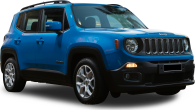
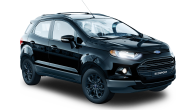








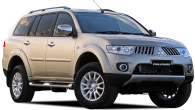




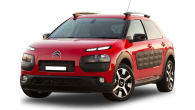




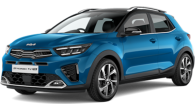


.jpg)

.jpg)
.jpg)
.jpg)
.jpg)





.jpg)
Comments